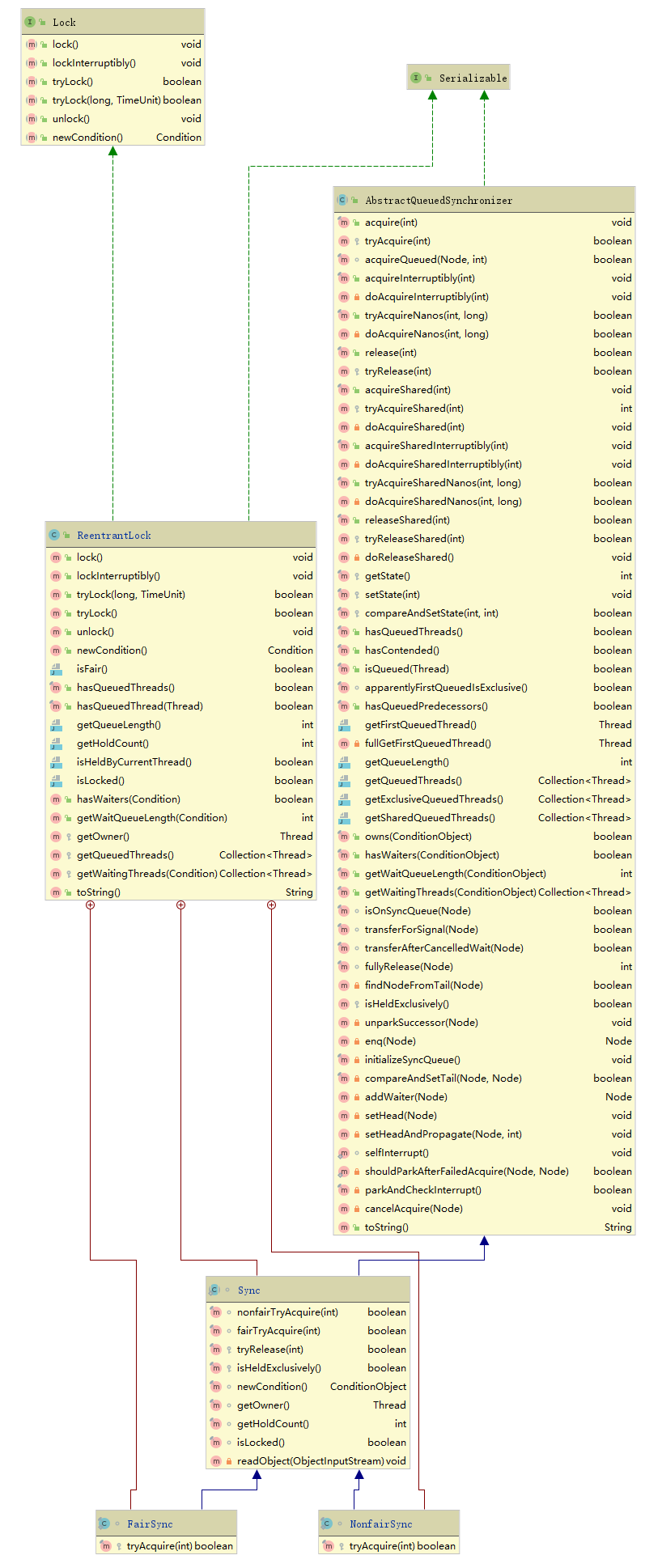参考kangjianwei大佬的LearningJDK
概述
类图

获得锁操作委托给继承了AQS的内部类Sync
FairSync和NonfairSync继承自Sync,分别实现公平和非公平的tryAcquire方法
调用解释
当调用reentrantLock().lock()时,调用sync.aquire(1),即aqs.aquire(1),然后aqs.tryAquire(),实际上是fairSync.tryAcquire()或nonfairSync.tryAcquire(),即sync.fairTryAquire()和sync.nonfairTryAquire(),尝试获取锁获取不到的话,则aqs.addWaiter(),在同步队列中排队,之后aqs.acquireQueued()从队列中申请,如果申请不到的话,则aqs.selfInterrupt(),阻塞线程.
1
2
3
4
5
6
7
8
9
10
11
12
13
14
15
16
17
18
19
20
21
22
23
24
25
26
27
28
29
30
31
32
33
34
35
36
37
38
39
40
41
42
43
44
45
46
47
48
49
50
51
52
53
54
55
56
57
58
59
60
61
62
63
64
65
66
67
68
69
70
71
72
73
74
75
76
77
78
79
80
81
82
83
84
85
| @ReservedStackAccess
final boolean nonfairTryAcquire(int acquires) {
final Thread current = Thread.currentThread();
int c = getState();
if(c == 0) {
if(compareAndSetState(0, acquires)) {
setExclusiveOwnerThread(current);
return true;
}
} else {
if(current != getExclusiveOwnerThread()) {
return false;
}
int nextc = c + acquires;
if(nextc<0) {
throw new Error("Maximum lock count exceeded");
}
setState(nextc);
return true;
}
return false;
}
final boolean fairTryAcquire(int acquires) {
final Thread current = Thread.currentThread();
int c = getState();
if(c == 0) {
if(!hasQueuedPredecessors()) {
if(compareAndSetState(0, acquires)){
setExclusiveOwnerThread(current);
return true;
}
}
} else {
if(current != getExclusiveOwnerThread()) {
return false;
}
int nextc = c + acquires;
if(nextc<0) {
throw new Error("Maximum lock count exceeded");
}
setState(nextc);
return true;
}
return false;
}
|
nonfairTryAcquire和fairTryAcquire区别在于fairTryAcquire判断了是否有正在排队的其他线程
